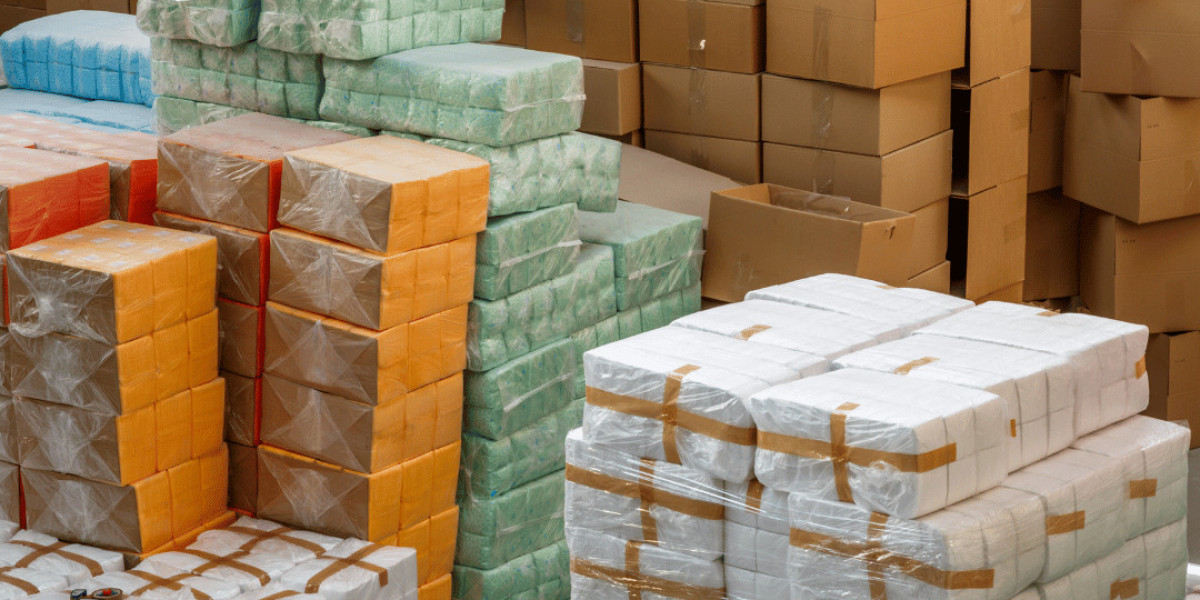Introduction
In today’s era, packaging is no longer simply a container—it plays a role in environmental responsibility, local economies, community health, and brand identity. In Philadelphia, where community and urban ecosystems matter deeply, packaging firms that combine sustainability with local impact can make a real difference. When a Philadelphia paper company embraces community-driven sustainable practices, both the business and the city benefit.
One such example is American Eagle Paper Company, which works not only as a packaging provider but also anchors sustainability and local community impact in its operations. This article explores how sustainability and community synergy intersect in Philadelphia packaging and how businesses and citizens alike benefit from those practices.
Why Sustainability & Community Impact Matter in Packaging
Packaging’s influence extends far beyond product protection. In Philadelphia’s urban context:
Urban Waste Pressures: Cities accumulate packaging waste quickly. Sustainable packaging helps ease landfill loads and reduces local environmental stress.
Local Economy & Jobs: When packaging operations remain local (paper mills, manufacturing, distribution), jobs stay in the community, boosting economic stability.
Consumer Expectations & Brand Values: City consumers often expect environmental responsibility and local sourcing. Brands that deliver on that build trust and loyalty.
Public Health & Resource Preservation: Using safe, non-toxic materials and minimizing chemical pollution helps protect neighborhoods, waterways, and public health.
Community Engagement & Education: Packaging firms can partner with local schools, community groups, or environmental nonprofits to raise awareness, run recycling programs, or implement composting pilots.
Key Sustainable Practices & Community-Oriented Strategies
Here are concrete ways that packaging firms and businesses in Philadelphia embed sustainability and community impact into packaging operations:
1. Local Material Sourcing & Circular Supply Chains
By sourcing raw fibers, paperboard, or recycled content locally, packaging companies reduce transportation emissions, support regional forestry or recycling industries, and shorten supply chains. Local loops (collecting used packaging, recycling, remanufacturing) help close the cycle.
2. Recycling & Take-Back Programs
Packaging firms establish take-back or buy-back programs for used packaging, working with recycling centers or community drop-off sites. They can also offer incentives for returning packaging (discounts, credits) to close the loop.
3. Compostable & Biodegradable Packaging Options
In environments where composting capacity exists, offering compostable trays, films, or fiber packaging enables urban waste systems to handle packaging sustainably. The key is ensuring local composting acceptance and clear labeling.
4. Energy Efficiency & Clean Operations
Packaging mills and production facilities can adopt renewable energy, efficient machinery, waste heat recovery, and water reuse systems. These practices reduce carbon footprint and resource consumption, benefiting both business and community.
5. Education & Local Partnerships
Firms can partner with Philadelphia schools, nonprofits, or neighborhood groups to run workshops on recycling, composting, or sustainable design. Community packaging drives or educational programs raise awareness and strengthen local ties.
6. Social Equity & Workforce Development
Hiring locally, offering training or apprenticeships in manufacturing or packaging roles, and engaging underserved neighborhoods—all contribute to community uplift. Packaging companies can tie sustainability to social justice by ensuring workforce inclusion.
7. Transparent Reporting & Certifications
Publishing sustainability metrics—waste diverted, emissions reduced, material sources, community initiatives—builds trust. Certifications (e.g., recycled content, FSC, compostable standards) offer transparency that consumers and regulators respect.
How Philadelphia Packaging Companies Amplify Community Impact
A packaging company integrated into the community can maximize the intersection of sustainability and local benefit:
Localized Distribution & Logistics: Shorter distribution distances reduce emissions; local delivery also supports city jobs and reduces traffic burdens.
Community Recycling Schemes: A local packaging provider can partner with municipal recycling or compost programs to ensure their packaging is compatible with local waste systems and promote proper disposal.
Surplus Use or Donation of Packaging: Excess packaging materials or scrap can be diverted to community projects (art programs, packaging reuse, nonprofit needs) instead of going to the landfill.
Collaborative Pilot Projects: Companies can pilot sustainable packaging innovations with local businesses or institutions (schools, hospitals), showing proof of concept at the community scale.
Design for Local Conditions: Packaging adapted to Philadelphia’s urban conditions—humidity, transit roughness, density, recycling infrastructure—works better and reduces waste or rejection.
American Eagle Paper Company, by virtue of being a local paper mill and packaging entity, is capable of integrating many of these practices. Their proximity and commitment enable partnerships with local businesses, institutions, and neighborhoods to test, iterate, and scale sustainable packaging with meaningful community benefit.
Realistic Impact Narratives
Here’s how these practices manifest in real or plausible local narratives:
A neighborhood café partners with the packaging company to use compostable cups and trays. The supplier ensures a neighborhood compost drop-off point. Customers learn and participate in waste diversion.
A small retail chain sources paperboard from a local mill, reducing transport emissions and supporting forestry jobs in the Philadelphia region. As a result, their packaging carbon footprint decreases, and their “made locally” messaging resonates strongly.
A packaging firm sets up a school outreach program: packaging scraps and off-cuts are used in art or maker classes; kids learn about recycling, design, and urban sustainability.
A city festival’s packaged food vendors use eco packaging provided by the local packaging partner; after the event, the packaging is collected and composted locally—reducing post-festival waste in parks.
FAQs about Sustainability & Community Impact in Packaging
Q1: Are sustainable materials more expensive?
Often, yes, in upfront cost—compostable films, specialty fiber trays, or certified paper may carry a premium. But over time, savings emerge through fewer disposal costs, reduced waste, brand goodwill, and operational efficiencies. Local sourcing also cuts freight costs, narrowing the premium gap.
Q2: How do I know if a packaging material is truly compostable or recyclable locally?
Check local Philadelphia municipal or county recycling/composting guidelines. Request certifications (ASTM, BPI, etc.). Work with packaging companies familiar with local waste infrastructure. Ensure labeling clearly instructs users on proper disposal.
Q3: Can small businesses meaningfully impact community sustainability through packaging?
Yes. Even small changes—switching to recycled bags, compostable trays, local packaging partners—scale when many businesses participate. Moreover, small firms often influence community perception more acutely (neighborhood cafés, local shops, etc.).
Q4: How long does it take for sustainable packaging practice changes to impact the community?
Some benefits (waste reduction, carbon emissions) accrue immediately. Community education, behavioral change, and recycling infrastructure adaptation may take months or years. But consistent, visible commitment accelerates progress.
Q5: What metrics should I track for sustainability & community impact?
Track metrics such as: waste diverted (packaging recycled/composted), emissions reduced (transport, energy), amount of recycled or compostable materials used, number of community partnerships or education events, local jobs retained or created, and cost savings from waste reduction.
Contact Information
For businesses or community groups in Philadelphia interested in integrating sustainability and community impact into their packaging approach, the local provider to reach is:
American Eagle Paper Company
11500 Roosevelt Blvd #4a, Philadelphia, PA 19116, USA
Email: american.eagle.office@gmail.com
Phone: +1 (215)-464-9870
Website: https://americaneaglepaper.com/
Reviews & Testimonials
Here are voices from Philadelphia businesses engaging in sustainable packaging with a community focus:
“Partnering with the local packaging company allowed us to pilot compostable containers in our café; customers appreciated the effort, and we diverted tons of waste.”
“Using locally sourced recycled board from a nearby paper mill helped our brand message resonate—’made in Philly’ truly means more than marketing.”
? See or share your own sustainability or community impact story here: Leave a review






